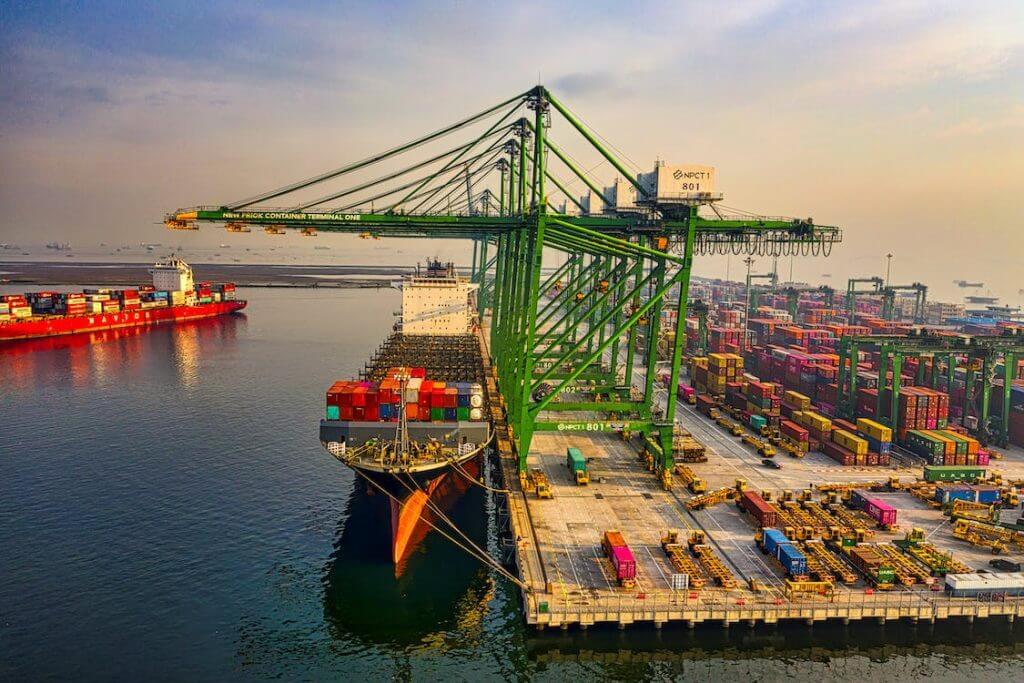Modern digital technologies are a significant trend that is currently penetrating all the main economic sectors, including logistics. Logistics companies that are bypassing the active application of these technologies are missing out on a lot of benefits.
For instance, route planning systems make it easier to address delivery delays caused by weather conditions or unexpected traffic accidents. This allows logistics providers to offer their clients more flexibility.
Improved Efficiency
In logistics, efficiency is key to maintaining a competitive edge and delivering an exceptional customer experience. However, outdated practices and fragmented networks make it difficult for logistics firms to achieve full visibility of their supply transport data. Digitalization can help by establishing cohesive and efficient networking systems that are capable of managing diverse data sets.
As a result, logistics firms can eliminate unnecessary intermediaries and deliver faster, more accurate services for their customers. Additionally, they can lower operational costs by leveraging advanced technologies like blockchain, IoT, and AI to automate and streamline processes.
Another way in which digitalization improves efficiency is by providing a single platform for all logistics operations. This can reduce the time and resources needed to manage different functions by replacing emails, phone calls, faxes, and other manual methods. It also allows logistics teams to access the information they need at any time, and in real-time.
For example, instead of waiting for a client to call in to ask about the status of their freight shipment, logistics companies can use their logistics automation platforms to provide this information instantly. This saves both the logistics firm and the client valuable time.
Finally, digitalization in logistics can also make it easier for clients to track the progress of their shipments. This is a major benefit for both logistics companies and their clients, as it gives customers peace of mind about the whereabouts of their deliveries. Additionally, it frees up logistics companies’ time to focus on other important aspects of their business.
Despite the challenges that stand in the way of full logistical digitization, it is clear that this is an essential step for any business looking to optimize its operations and deliver an exceptional customer experience. By embracing the latest digital technologies, businesses in the logistics and transportation industry can keep pace with evolving demands and thrive in the future economy.
Increased Transparency
With digitalization, it’s easier to keep both customers and employees informed of any changes in shipment status. This helps build customer trust and loyalty, as well as eliminate any miscommunications or delays that could lead to costly errors.
For example, one of the leading shipping companies in the world, Maersk, has used digital technology to streamline its logistical processes. By implementing logistics automation and blockchain technologies, they’ve been able to increase transparency in their supply chains, which has ultimately led to improved customer service. Goodfirms’ resource for California supply chain companies are indicated on the link, which you can check out yourself.
Additionally, digitized systems allow companies to monitor shipments in real-time, which makes them more agile. This is especially beneficial for cold chain transportation, where any delays can cause significant damage to perishable goods.
Digitalization also provides a more reliable platform for communication and collaboration with partners. This is especially useful in the case of global partnerships, as it can be challenging to coordinate shipments across multiple locations and time zones. Digital solutions make this process easier and more efficient, so companies can focus on meeting their customers’ needs.
Another benefit of digitalization is that it can help companies reduce costs by automating manual tasks and minimizing paperwork. This can lead to lower overhead costs and higher profitability. Additionally, digitalization can improve employee satisfaction by providing more meaningful work and boosting morale. In fact, Gallup has found that highly engaged employees are 23% more productive and have a 43% lower turnover rate.
So if you’re looking for ways to cut costs, boost productivity, and provide better customer service, look no further than digitalization! With its many benefits, it’s no wonder that more and more organizations are turning to digitalization to get ahead.
Enhanced Customer Service

The digitalization of logistics processes provides a significant increase in customer service. Companies are able to offer faster delivery times, provide more accurate information about delays, and improve the overall experience of their customers. In addition, digitalization has also enabled companies to automate many processes and reduce the need for human intervention, which can save time and money.
As a result, digitalization has improved the quality of logistics services and increased the competitiveness of companies in the industry. As a result, both established companies and new entrants are investing in digital technologies to compete with their rivals. In addition, the use of digital technologies in logistics helps to create a high level of transparency and improve customer service.
One of the most important technologies for logistics is electronic air waybill (e-AWB). This is a document that allows you to track cargo throughout its journey from the point of origin to the final destination. By using e-AWB, you can ensure that your shipment is always on the right route and arrives on time. Additionally, e-AWBs allow you to communicate with your customers in real-time, which can help build trust and increase customer satisfaction.
Another benefit of digitalization is improved worker safety. In the logistics industry, workers often face dangerous working conditions, such as long hours on the road or heavy lifting and handling of goods. By implementing digital technologies in logistics, such as a central hub for storing safety procedures and policies, you can protect your employees and improve work conditions.
The best way to improve your logistical services is by introducing digital technology into your business. By digitising your warehousing, shipping methods and day-to-day business systems, you can significantly improve the quality of your logistics services and increase your profit margins.
Increased Flexibility
The transportation and logistics sector is highly interconnected with other economic sectors, so improving logistics adds to the overall economic growth of separate countries as well as the global economy. That is why digitalization of logistics is crucial to business success. With modern digital technologies like automation, streamlined processes, and cloud computing, companies are able to work more efficiently with fewer resources, while providing the same level of service as their competitors.
For example, online shoppers have become accustomed to receiving their orders promptly and efficiently. They expect same-day shipping and a wide range of delivery options to be available, depending on their location. This has put a strain on logistics and supply chain management. To meet these expectations, logistics organizations need to be able to quickly respond and adapt. Digitalization in the form of back-office automation, paperless bills of lading, and real-time freight rates has sped up processes and increased efficiency significantly.
Furthermore, logistics teams need to be able to manage the complex international shipments that often involve a dozen different parties including transport carriers, forwarders, shippers, suppliers, factories, terminals, dray providers, customs brokers, and more. These complexities can be overcome with digitalization using tools such as an AI-powered supply chain appointment scheduler, or truck platooning systems that sync trucks to drive in convoys for safer driving conditions.
Moreover, digitizing your logistics processes can free up valuable human and financial resources that you can use for other projects, boosting employee morale and creating a more united corporate culture. This leads to higher productivity and retention, which in turn reduces employee churn and recruitment costs. In fact, McKinsey reports that highly engaged employees are 23% more productive than their peers.
Increased Competitiveness
With the rise of global trade and a booming buy-and-sell ecosystem, businesses need to fulfill orders quickly, transport products across borders and do so at affordable costs. This creates a massive challenge for logistics professionals who lack digitization solutions. Digitalization enables companies to streamline and centralize their operations, reduce bottlenecks and add flexibility to their models. The result is a more efficient, cost-effective and competitive supply chain.
The back-office operations and shipping processes of logistic companies are going digital to improve end-to-end visibility. Methods such as automation, paperless bills of lading and real-time freight rates increase efficiency significantly. Technologies such as Big Data, Artificial Intelligence (AI) & Machine Learning, Natural Language Processing, Blockchain and Cloud Computing are propelling current digital transformation, replacing older technology such as AS400 green screens.
Digitalization in logistics also improves worker safety. This is a major concern for logistic companies as workers spend long hours on the road, and are exposed to traffic accidents, weather conditions, hazardous materials and other environmental hazards. The use of smart wearables that track their location, a central hub that stores all safety policies and procedures and streamlined risk assessment tools can significantly improve worker safety.
The benefits of digitalization in logistics are numerous, and it is a trend that is here to stay. However, the success of digitalization in logistics depends on a harmonious blend of technology integration and workforce readiness. Providing training and upskilling opportunities to employees will help them harness the full potential of these new technologies. This will lead to better communication between employees and customers, a more cohesive corporate culture and higher productivity for the organization as a whole. In a hyper-connected world where everyone expects their shipments to arrive at the right time, embracing digitalization is the only way to maintain a competitive advantage.




